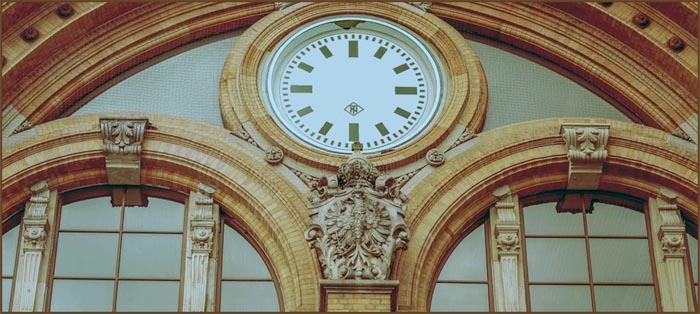The Paradox of the Arrow
The Greek philosopher Zeno of Elea identified famous paradoxes, including the paradox of ‘the arrow in flight.’ With this, he showed that the concept of motion might be an illusion. Zeno’s paradox about the arrow goes as follows:
 When an arrow is shot through the air, at every moment in time (like a photograph), the arrow is at one specific place. If the arrow has a fixed position at such a moment, it seems as if it is stationary. Viewed this way, time would be an infinite series of moments, and thus the arrow could never truly be in motion. Therefore, movement is an illusion.
When an arrow is shot through the air, at every moment in time (like a photograph), the arrow is at one specific place. If the arrow has a fixed position at such a moment, it seems as if it is stationary. Viewed this way, time would be an infinite series of moments, and thus the arrow could never truly be in motion. Therefore, movement is an illusion.
Zeno did not use this paradox to claim that movement does not exist but to defend the ideas of his teacher Parmenides (who posited that reality is one, unchanging, and immobile). Zeno tried to show that concepts of change and motion are philosophically problematic, at the very least. This paradox highlights a fundamental problem in truly understanding time and motion.
If we divide time into infinitely small moments, how do we explain the transition between those moments? This raises the question of ‘how long’ each moment of Now lasts. A second? A breath? It is always arbitrary. There are no boundaries to define. Look at the needle of a record player in the groove of a record. Aristotle rightly pointed out that motion cannot be conceived as a series of static moments. Motion is continuous and cannot be divided into stationary states. In modern physics, motion is seen as spacetime, where time is not considered a series of successive moments but a continuous dimension.
Zeno’s paradox of the arrow in flight is more than a cognitive puzzle, where reality clashes with experience. It raises essential questions about our perception of time, space, and motion. Does movement ‘really’ exist, or is it merely an illusion of our senses and mind?
There is only Now, an eternal moment
My thesis is this: the Now, as people currently call it, is the only timeless, everlasting moment of existence. There is no other moment than Now, at least not in the known universe with its current nature (originating from Prakriti). Everything ‘that was’ and everything ‘that comes’ is therefore illusory. Yet, the average person continually sees it as real because their thoughts wander there. This is because we are endowed with a cognitive memory, an essential tool of our human mind, without which we could not exist, especially in social life. Nevertheless, we can also claim that every moment in the past was also Now, and every moment in the future will also be Now. Thus, from the ultimate past to the ultimate future, everything is eternally Now, only we humans, ‘stuck’ in our life course, cannot fully experience this. From the perspective of Now, the entire past and future happen ‘simultaneously.’ The Absolute Now is one, just like Absolute Consciousness. There is no ‘two’ in it. But as a living being, we experience duality and therefore experience time. Even in a way that is very much subject to change, depending on all kinds of factors.
Past and future are
projections of our mind
Our memory, which connects and classifies what is experienced, makes us see time as a kind of path that is walked, with ‘behind us’ an interpreted past and ‘ahead of us’ a projected (virtual) future. This creates a ‘script’ that becomes stronger in us as the years go by because we have a dual mind and cannot imagine non-duality: a constancy behind all changes and processes. While modern insights from modern physics increasingly show that the non-dual reality behind our universe is not an illusion, our perception of reality is.
If we consider Now as the only timeless moment, this aligns with various spiritual and philosophical traditions that see the experience of/in the moment as the only reality. In Advaita Vedanta, time is seen as a mental construction stemming from our identification with what we have ‘baked’ into a story using our memory, including interpretations of what the future might look like. Now is the only real experience, and the past and future are merely mental projections created by our memory and imagination.
In Buddhism, emphasis is also placed on the moment of experience. Here too, it is stated that the past and future are merely constructions of the human mind, creating the feeling of time. Being fully present in the moment and freeing oneself from these mental projections would bring enlightenment.
Our memory (Citta) thus plays a crucial role in how we experience time. In psychological terms, we construct time by linking memories of the past and expectations of the future. Our memory gives us the idea of continuity and causality within changes because we see ourselves within a linear sequence of events. Like the needle in the groove. This creates the feeling of a ‘time path’ we traverse. Our understanding of time arises from how we cognitively organize events. We are particularly adept at creating a ‘story’ (narrative) that connects the past, present, and future, keeping us away from true spirituality. Living fully in Now, the personal story slowly dissolves, as we see happening with people who develop dementia.
Advaita and Non-Duality
Advaita (non-duality) is the core of every discussion about the nature of reality and thus also that of humans. According to this view, the separation between ‘I’ and ‘the other,’ and even between time and space, is an illusion arising from our limited experiential capability. In the Advaita view, there is no fundamental separation between the individual and the universe: everything is a manifestation of the one, unbound Absolute Consciousness. What we experience as time, change, and duality are merely phenomena arising from the limited perception of our human mind.
The nature of the human mind is dual in its operation, in a perceived dual Creation, and everything that ‘happens’ in it happens thanks to duality. Everything that occurs on our Earth and in the entire universe happens thanks to opposing and complementary forces. Without that, everything would freeze to a standstill, and no movement or change would be possible. This applies not only to the material physical world but also to the subtle world (that of the mind) and perhaps even to the causal world (that of causality). It also applies to the digital world of ones and zeros and electricity, where nothing would be possible without the duality of ones and zeros or positive and negative poles. Take, for example, the developing A.I.: this system cannot function or even exist without duality. Computer data and processes will never be able to enter a ‘direct experience’ like humans can. As humans, according to Buddhism, we are even capable of fully awakening into a non-dual reality. Hence, the rapidly growing idea that A.I. could replace humans is completely absurd, of course.
Reality is essentially a timeless network of permanent relationships between everything, which our human consciousness can only experience as dualistic, and thus from a standpoint of moments, but whose underlying reality is non-dual. This can be experienced by us, but only through awareness and training.

Neutral Now-perception:
“A timeless realm, an eternal presence in perfect rest, which surpasses all human clocks and calendars. The rest of the Now, in the time-pressed and time-swinging existence of man…
This timeless space is the very heart of time.” (Hannah Arendt)

